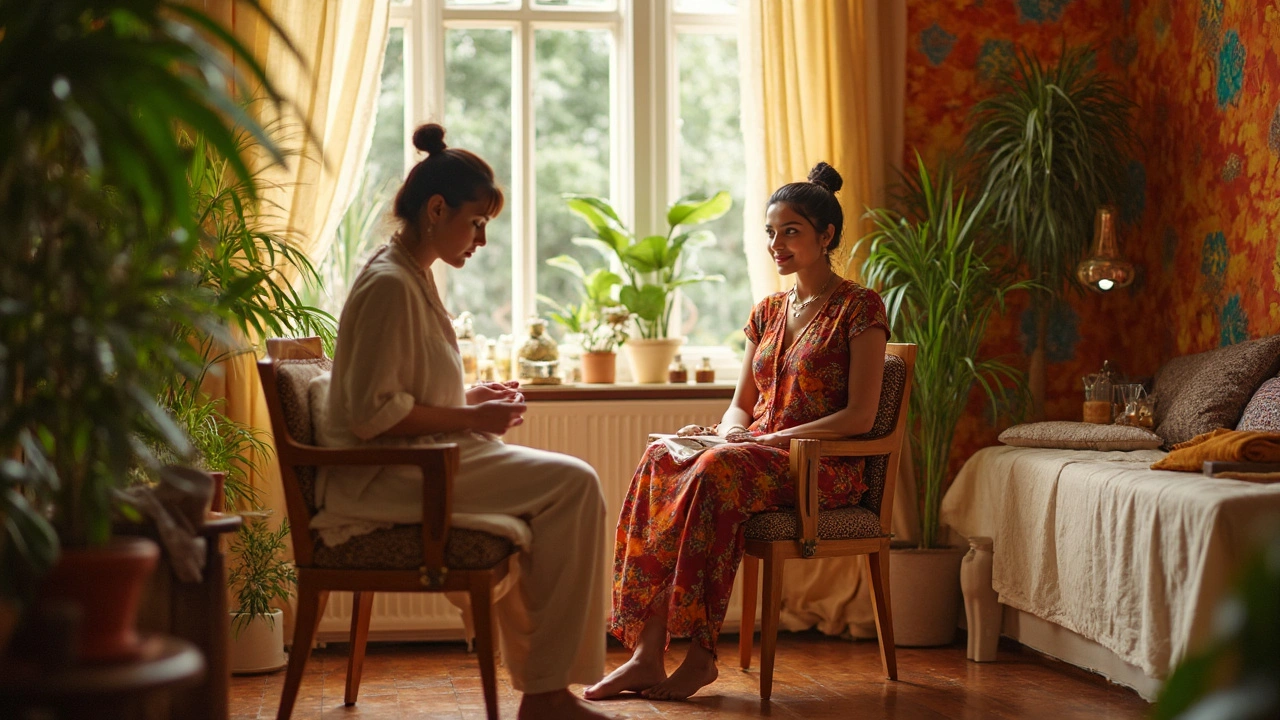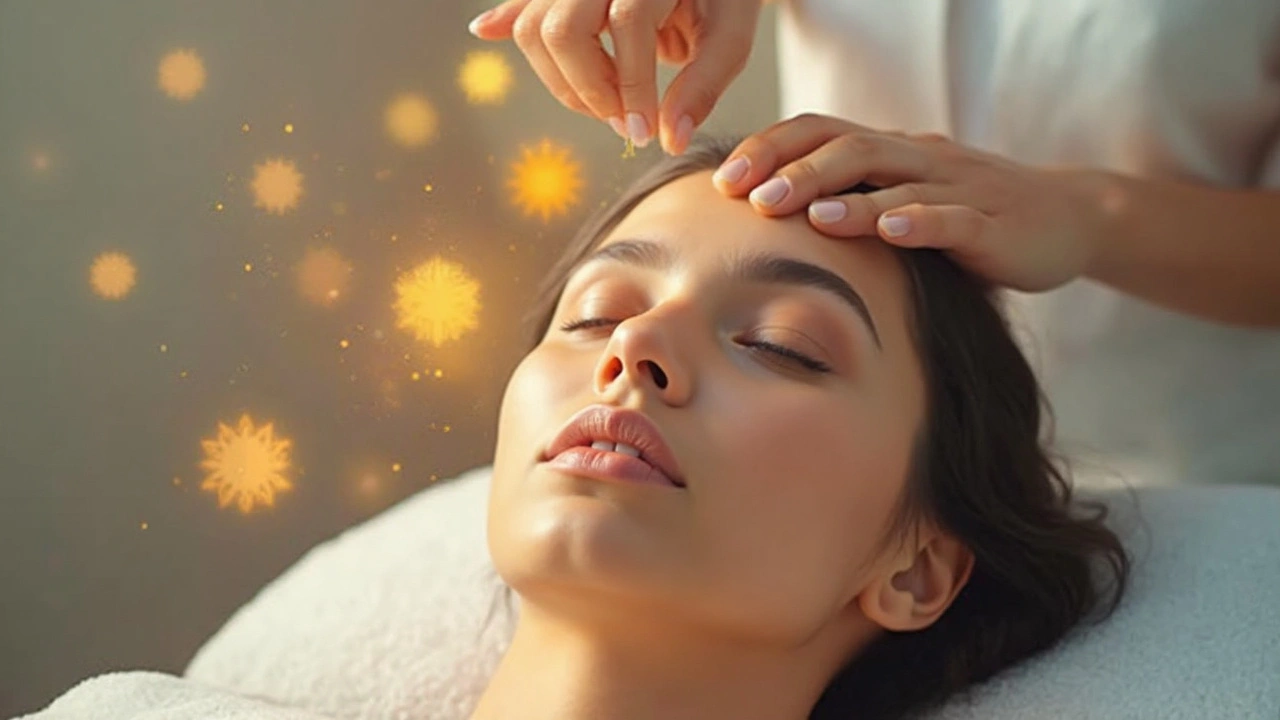
- Created by: Liam Redgate
- Completed on: 29 May 2025
- Categories: Wellness & Beauty
Why Indian Head Massage Is the Ultimate Urban Stress-Buster
Ever felt like your brain’s about to boil over from London’s madness? You’re squeezed onto the Central Line, dodging rainclouds, lobbing emails back and forth, and by the time you get home, your shoulders could double as climbing walls. That’s the point where Indian head massage doesn’t just sound good—it sounds necessary. Strangely, most people assume massages are only for sore backs or stiff legs, but the head, scalp, and upper body soak up stress like a sponge in a puddle. And no, you don’t need to jet off to Goa—some of the best Indian head massage therapists call London home.
The roots of this blissful practice dig deep into Ayurvedic tradition—think India, thousands of years ago, where head, face, neck, and shoulders were believed to be the storehouses of tension. Now, Indian head massage (sometimes called Champissage) fits right into the busy city lifestyle; you can get it as part of a luxe spa session or pop into a quick lunchtime slot. Sessions usually last anywhere from 20 to 50 minutes, with skilled therapists using a combo of firm and gentle movements, pressure points, and rhythmic finger work. Personally, after my first decent head massage in Soho, I slept like Luna (my notoriously lazy cat) on the sofa for hours—a small miracle in itself!
But it’s not just about escaping for a moment. Indian head massage gets the blood circulation going, releases built-up toxins, and is said to help with headaches, eye strain, and even hair growth. That’s probably why office workers book it as a Friday treat, while others see it as a regular wellness fix. Ever heard of “fight or flight”? Well, a study published by Middlesex University in 2022 found that participants receiving weekly Indian head massages for four weeks showed a visible drop in cortisol levels (that infamous stress hormone). If modern living’s got your shoulders glued to your earlobes, this isn’t just pampering—it’s a reset button.
It’s worth knowing that modern therapists blend Indian traditions with Western techniques, giving you suit-and-tie efficiency or full-on candles-and-chimes ambience depending on where you book. Some places let you stay fully clothed, other salons offer essential oils—so you can go low-fuss or all-in. Added bonus? If you think massages are pricey, head massages in London are refreshingly affordable compared to full-body treatments.

What Happens During an Indian Head Massage in London?
Picture this: you walk into a treatment room scented with gentle oils—not too overpowering, just enough to tell your brain it’s time to switch off. Your therapist starts with a few grounding breaths, maybe a quick chat about what you need (tight jaw from all those meetings? chronic migraines?). You’re either sat upright in a comfy chair or sometimes lying back on a cushioned table. No need to strip down to your undies—most Indian head massages let you keep your top on. That instant wave of relief? It’s real and kicks in pretty quick.
Therapists usually begin at the shoulders, kneading and stretching knotted traps that have carried your rucksack and your stress all week. Fingers then work up to your neck, easing tension where your head meets the spine—a hotspot for anyone who does too much screen time. Next come the temples, forehead, and scalp, often with small circular motions or gentle tugging (sounds weird, but feels brilliant). At times, they’ll tap along the scalp or run fingers through your hair in slow, deliberate strokes. In traditional Ayurvedic practice, the whole routine is designed to unlock energy, improve blood flow, and fire up your body’s own healing circuit.
Depending on your spot, oils like coconut or sesame might be worked into the hair and skin. This isn’t just for the spa factor—they’re meant to nourish your scalp and help with hair condition. If you’re not up for greasy locks, don’t worry; many London therapists skip the oils or offer alternatives. A quick scan through health forums and even Google reviews will show that people swear by Indian head massage for melting away tension headaches and even helping them sleep on those nights when the city just won’t stop buzzing. If you’re allergic to anything, make sure you speak up before they reach for the oils.
Most sessions end with a gentle realignment—some therapists will invite you to stretch your neck or just breathe deeply before you drift back to reality. The after-effects can feel surprisingly noticeable: looser shoulders, a lighter mind, and sometimes a burst of creative energy. A tip? Try not to rush straight back to work. Give yourself at least 10 minutes to let the relaxation sink in. You’ll thank yourself when you’re gliding through Oxford Circus instead of stomping like a tired commuter.
The great thing is, there’s no typical client—city workers, parents, runners, and even students all queue up for these sessions. A 2023 survey by The Massage Company showed London had over 300 registered therapists offering Indian head massage, both in salons and mobile visits. Whether you want to break up your week or need serious TLC, chances are there’s a perfect spot just down the road.

How Indian Head Massage in London Compares, and How to Book the Best Sessions
Not all massages are made equal. Head massages are quick, convenient, and can easily fit a lunch break. Full-body massages take longer and require private treatment rooms. The key difference? Indian head massage hones in on the stress hotspots that actual city life punches hardest: head, neck, scalp, shoulders—those are your pressure points if you’ve had a long day behind a screen.
Londoners have tons of choices. Some go for ultra-traditional clinics near Southall or Wembley, while slick Mayfair spas offer Indian head massage as part of mixes with reflexology or aromatherapy. You’ll find small independent therapists, pop-up events at yoga studios, and even mobile services that bring the massage chair to your office or front room. If you want to check what’s nearby, apps like Treatwell or Urban let you filter by location, price, and treatment style. Just don’t be shy about reading reviews—Londoners are generous with their feedback, both good and bad.
- Ask for credentials: A good therapist should be certified in Indian head massage or holistic therapy.
- Check hygiene: Ask about clean towels, sanitized hands, and how oils are prepped.
- Communicate: Be honest about your aches, sensitivities, and especially any allergies.
- Compare prices: Expect to pay around £25–£50 for a 30–40 minute session, though spas can charge more.
- Location matters: Fancy Mayfair or Camden’s indie studios—each has a vibe, so choose your mood.
Some therapists specialise; some are generalists. Want to know the difference between Indian and Thai head massage? Indian style is gentle, flowing, and focused on energy points, while Thai techniques use more stretching and stronger pressure. Local therapists often blend in a bit of Swedish massage if they sense you’ve got serious knots, so you may get the best of global influences in one go. For those who like info at a glance, check out the table below for a snapshot of how Indian head massage stacks up against classic head massage in London:
| Feature | Indian Head Massage | Classic Head Massage |
|---|---|---|
| Emphasized areas | Head, neck, shoulders, face | Mainly scalp and forehead |
| Technique style | Ayurvedic, rhythmic, gentle | Western, sometimes firmer |
| Use of oils | Optional, natural oils | Rarely |
| Usual duration | 20–45 mins | 15–30 mins |
| Clothing | Mostly clothed | Clothed |
| Known for stress relief? | Yes | Yes |
| Average cost (London) | £25–£50 | £15–£35 |
- Ready to book? Use trusted platforms. Treatwell, Urban, Fresha, and even ClassPass have up-to-date listings. You can filter by area, reviews, therapist gender, and price.
- Want pure tradition? Try neighbourhoods like Southall for longstanding practitioners.
- Don’t fancy leaving home? Search for mobile therapists in your area—most will bring everything they need, including music.
- Look for introductory offers—some studios let you try your first session half price.
Now, about safety. It sounds obvious, but don’t book if you have open scalp wounds, severe skin infections, or recent head injuries. Always mention allergies before oils come out. Pregnant? Most therapists can adapt their routine, but double-check first. And if you’re on blood-thinning medication or have persistent health issues, get the green light from your GP. Good Indian head massage shouldn’t hurt—don’t be heroic if something feels off, just say so.
For anyone who still has questions, here’s a rapid-fire FAQ, mixing what people genuinely search for on Google with what I get asked by friends:
- Can Indian head massage help with migraines? Many people say yes, and a 2023 study in the British Journal of Pain suggested that regular sessions can cut headache days in half for some migraine sufferers. Results aren’t guaranteed, but if you’re desperate, it’s worth a go.
- Will my hair get oily? Only if you choose an oil-based massage. Just warn your therapist if you fancy a dry session—you won’t leave looking like you’ve had a fry-up.
- How often should I book? Some recommend weekly, but even one session a month can make a difference if you’re constantly stressed.
- Does it hurt? It shouldn’t. Some pressure is normal, but pain isn’t the point. Speak up if anything feels uncomfortable.
- Is tipping expected? In London, tipping isn’t mandatory, but it’s appreciated if you get stellar treatment—usually 10–15%.
If you’re fed up with London’s endless rush, Indian head massage might just be your secret weapon. Whether you want to shake off a rough week or just crave some peace and quiet, this ancient practice slips quietly into modern city life—and leaves you feeling brand new. Ready to give it a go? Treat yourself. Your mind, muscles, and maybe even your hair will thank you.